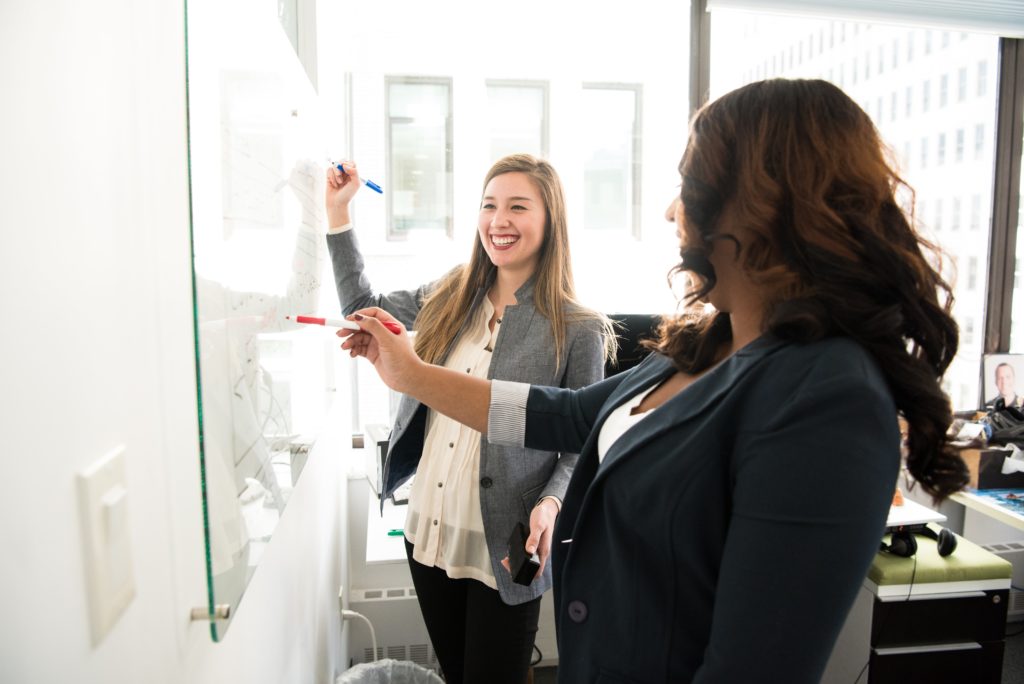Temperatures are cooling down and leaves are starting to fall. For some of us, this means saying so long to extended summer vacations and hello to busy season. As you hunker down into work mode, think about how you can practice mindfulness to improve performance at the office.

Mindfulness is a powerful tool with positive benefits including improved attention, cognition, emotions, and behavior. When implemented into the workplace, organizations notice a decrease in stress levels with improved focus, clarity, listening, decision-making skills, and overall well-being, according to the Harvard Business Review. It’s no wonder established organizations such as Google, General Mills, Intel, and Target have devoted resources toward integrating mindfulness into their offices.
Like anything, mindfulness takes practice. The more you practice, the more you will notice improvements in your ability to concentrate, strategize, and work with your team. Most of us have heard that being present, breathing deeply, and taking short breaks contribute to a more successful workday, but experts recommend several other strategies you may want to try:
Become a single-tasker
Studies indicate that multi-tasking isn’t any more productive than focusing on tasks one at time. When we multi-task, our brains switch from one topic to another, often losing data in the process, says Mindful.org. Even with this evidence, we still do multiple things at one time because it makes us feel more productive, according to a study involving college students at Ohio State University. More evidence supports the theory that multi-tasking is addictive – the more you do it, the more you want to multi-task in every area of your life. However, research shows that focusing on one task at a time is more productive.
Make stress your friend
It’s all about perspective. Those who experience high levels of stress but view it as a positive energy tend to have lower mortality rates, according to a recent University of Wisconsin-Madison study involving 30,000 people. How we think about stress has a direct impact on our health and well-being. So, the next time you are faced with a challenge, pay attention to your body’s natural reaction. Your increased heart rate and accelerated breathing are preparing you for the challenge. By viewing stress as a positive response, you can add years to your life while improving productivity and performance at the office.

Keep mindfulness in mind
Fun fact, the word “mindful” means to remember, but one of the hardest parts about adopting a mindful lifestyle is remembering to keep it up. Our brain’s default mode is to run an internal narrative. As we go about our daily activities, our brain conserves energy by going into a restful, almost dreamy state. A Harvard study found 47% of a person’s day is spent lost in thoughts. Being on auto-pilot most of the day means we aren’t aware of surrounding opportunities or thinking creatively. Try snapping yourself out of it by setting a vibrating alarm periodically throughout the workday. This is a simple way to bring you back to the present.
Practice C3
The workplace often gets intense. There are bold personalities, conflicting management styles, different work ethics, and lots of opinions. Being mindful of how others view your responses will help you see their perspective and lead to a mindful work environment. When in doubt, don’t respond to an email that upsets you until you feel “C3” – clear, calm, and confident. This term comes from CEO coach, Cheryl Amyx. Thinking about how your actions will be perceived by employees and co-workers is a simple step toward creating a mindful workplace.
Stop and smell the roses
We miss so many details about our environment while running from back-to-back meetings. In an interview with Forbes, Rosie Guagliardo from InnerBrilliance Coaching discusses one of the ways she practiced mindfulness throughout the day while working in advertising: “When I washed my hands, I’d notice the water temperature and feel of the soap.” Incorporating mindfulness into your routine doesn’t have to block off time on your calendar. A little mindfulness each day keeps you in the present, making it easier to connect with employees and build meaningful work relationships.

The most beneficial strategy for creating a mindful work environment is to simply open the conversation. Mindfulness can be intimidating to those who are new to the idea. There are so many ways to practice mindfulness, all of which are scalable to individual comfort levels. Starting a conversation with your team about various techniques is the first step to creating a mindful work atmosphere.